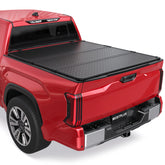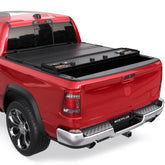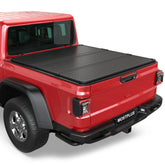What are wheel bearings?
The main function of the wheel hub bearing is to carry the load and provide precise guidance for the rotation of the hub, which carries both axial and radial loads and is a very important component. The traditional automobile wheel bearing is a combination of two sets of tapered roller bearings or ball bearings, and the installation, lubrication, sealing, and clearance adjustment of the bearings are carried out on the automobile production line. This structure requires difficult, expensive, and unreliable assembly at the car manufacturing line, and requires cleaning, lubrication, and adjustment of the bearings at the car service station. The wheel bearing unit is in the standard angular contact ball bearings and tapered roller bearings on the basis of development, it will be two sets of bearings as a whole, with good assembly performance, can be omitted clearance adjustment, lightweight, compact structure, large load capacity, for the sealed bearings can be loaded into the grease in advance, omitting the external hub seals and maintenance-free, etc., has been widely used in sedans, also in the heavy-duty vehicles to gradually expand the application of the trend.

Installation and Use
Sedan wheel hub bearings in the past is most pairs of single row tapered roller bearings or ball bearings. With the development of technology, cars have been widely used in cars wheel hub unit. The use of wheel bearing units is growing in scope and volume, and has now developed into the third generation: the first generation is composed of double row angular contact ball bearings. The second generation has a flange on the outer raceway for mounting the bearing, which can be simply pushed onto the axle and fixed with a nut. This makes vehicle maintenance easier. The third generation wheel bearing unit is a bearing unit compatible with the anti-lock braking system (ABS). The hub unit is designed with an inner and outer flange, with the inner flange bolted to the drive shaft and the outer flange holding the entire bearing together. Worn or damaged wheel bearings or hub units can cause inappropriate and costly failure of your vehicle on the road or even compromise your safety.

Please observe the following when using and installing wheel bearings:
- To ensure maximum safety and reliability, it is recommended that wheel bearings be inspected frequently regardless of the age of the vehicle - look for early warning signs of bearing wear: including any friction noise when turning or unusual deceleration of the suspension combination wheels when cornering. Lubrication of the front wheel bearings is recommended at 38,000 km for rear-wheel-drive vehicles. When replacing the brake system, inspect the bearings and replace the oil seals.
- If you hear a noise coming from the wheel bearing area, the first thing to do is find out where the noise is coming from. There are many moving parts that can produce noise, and there may also be some rotating parts in contact with non-rotating parts. If the noise is confirmed to be in the bearings, the bearings may be damaged and need to be replaced.
- 3, because the front hub causes similar operating conditions on both sides of the bearing failure, it is recommended to replace them in pairs even if only one bearing is bad.
- Wheel bearings are sensitive and require the use of proper methods and tools in all cases. Bearing parts must not be damaged during storage, transportation, and installation. Some bearings require more pressure to be pressed in, so special tools are needed. It is important to refer to the instructions of the automobile manufacturer.
- the installation of bearings should be in a clean and tidy environment, small particles in the bearing will also shorten the life of the bearing. When replacing bearings, it is very important to maintain a clean environment. It is not allowed to hit the bearing with a hammer and take care that the bearing does not fall on the ground (or similar mishandling). In addition, the condition of the shaft and the housing should be checked prior to installation. Even minor wear can result in a poor fit, which can lead to premature bearing failure.
- For wheel bearing units, do not attempt to disassemble the wheel bearings or adjust the seals of the wheel unit as this may damage the seals resulting in water or dust ingress. The seal and inner ring raceways will also be damaged, resulting in permanent bearing failure.
- There is a magnetic thrust ring inside the seal of the bearing equipped with the ABS unit, and this thrust ring cannot be subjected to collision, impact, or collision with other magnetic fields. Remove it from the box before installation and keep it away from magnetic fields such as the motor or power tool being used. When installing these bearings, check the operation of the bearings by observing the ABS warning needle on the instrument panel during the road test.
- For wheel bearings with ABS magnetic thrust washers, use a small, light object near the edge of the bearing to check which side the thrust washer will be installed. Install with the magnetic thrust ring side facing inward, directly toward the sensitive element of the ABS. NOTE: Improper installation may result in a defective brake system.
- Many of the bearings are sealed and these bearings do not require lubrication during their life. Other bearings that are not sealed, such as double-row tapered roller bearings, must be greased during installation. It is difficult to determine how much grease to add because the internal cavities of the bearings vary in size. The most important thing is to make sure that there is grease in the bearings; if there is too much grease, the excess will seep out as the bearings rotate. General experience: when installing, the total amount of grease should be 50% of the clearance of the bearing.
- 10, when installing the locknut due to the different types of bearings and bearing housing, the size of the torque varies greatly.
Maintenance Attention
In the maintenance process, it is often found that some cars have a large driving noise, check the tires without abnormal wear, and turn the wheels on the lift without obvious noise. This phenomenon is often caused by abnormal damage to the wheel bearing, the so-called abnormal refers to the bearing damage caused by installation reasons. The front wheel bearings of the vehicle are generally double-row ball bearings, and if you use a hammer to hit the installation when installing the bearings, or install the bearings by pressing the inner ring of the bearings when installing the bearings into the bearing housing, it will cause damage to one side of the bearing raceway. Noise will be heard when the vehicle is running, but when the wheels are off the ground, no noticeable noise will be heard because of the better raceway side. Proper installation is the key to long-bearing life.
What happens if a wheel bearing is damaged?
When the vehicle four wheel bearing is damaged, the car is traveling in the car you will hear a continuous buzzing sound, this sound is not clear from where the feeling of the entire cabin is full of this buzzing sound, and the faster the speed of the car the louder. The following is the method of judgment:
- Method 1: Open the windows and listen to the sound from outside the car;
- Method 2: increase the speed (the buzzing sound is bigger) will gear position in neutral to let the vehicle coast, and observe whether the noise comes from the engine, if the neutral coasting buzzing sound does not change, that most likely is a wheel bearing problem;
- Method 3: temporary parking, get off to check whether the temperature of the axle is normal, the method is: touch the four-wheel hubs, and roughly feel whether their temperature is the same (brake shoes, pad clearance is normal, the temperature of the front and rear wheels is a gap, the front wheel to be higher), if you feel the difference is not big, can continue to slow the car to the repair station;
- Method 4: lift the car with a lift (before releasing the handbrake, hanging neutral), no lift can be used to lift the wheels one by one, manpower, respectively, rapid rotation of the four wheels, when encountering a problem axle, will emit a sound, and other axles are completely different, with this method is very easy to distinguish which axle has a problem.
If you encounter serious damage to the wheel bearings, if there are cracks, pitting, or erosion on them, they must be replaced. Before installing new bearings, grease them and then install them in reverse order, replacing them with bearings that are flexible and free of noise and vibration.
Featured Products
- $479.99
$499.99- $479.99
- Unit price
- / per
- $549.99
$549.99- $549.99
- Unit price
- / per
- $489.99
- $489.99
- Unit price
- / per
- $469.99
$489.67- $469.99
- Unit price
- / per














